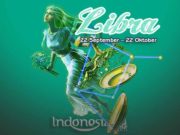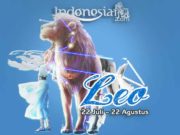Pencak Silat is a traditional Indonesian martial art. Since March 2017, Indonesia has proclaimed and registered Pencak Silat as a nominee for Intangible Cultural Heritage for Humanity to UNESCO. Considering that this native Malay traditional martial art has gone global, at the 14th session of the UNESCO Intangible Cultural Heritage Committee in Bogota, Colombia, on Thursday, December 12, 2019, it has made pencak silat into the Representative List of the Intangible Cultural Heritage of Humanity.
In its consideration, the UNESCO Intangible Cultural Heritage Committee views that the preservation of the martial arts tradition has shown aspects that encourage respect and brotherhood as well as a process of social cohesion, not only in one region, but also nationally and even in the international world.
UNESCO’s Intangible Cultural Heritage Committee Session took place from 9 – 14 December 2019. The Indonesian delegation who was also present consisted of the Deputy Permanent Representative of the Republic of Indonesia to UNESCO Surya Putra Rosa as chairman, Indonesian Ambassador to Colombia Priyo Iswanto, Director of Cultural Heritage and Diplomacy Nadjamuddin Ramly, West Sumatra Governor Irwan Prayitno, and a number of staff from the Ministry of Foreign Affairs and the Ministry of Education and Culture.
In his remarks, Surya Rosa Putra, the Indonesian Permanent Delegation Representative to UNESCO, said that the silat tradition is not just self-defense, but also a way of life for the perpetrators. “Pencak silat teaches us to be able to have a good relationship with God, fellow humans and the environment. Even though pencak silat teaches attacking techniques, the most important thing is that it also teaches us to be able to hold back and maintain harmony, “he said.
Of course, the determination of pencak silat as an Intangible Cultural Heritage is good news for the Indonesian nation. There are four aspects in the martial arts tradition, namely mental-spirituality, self-defense, arts, and sports, which make this traditional Indonesian martial art listed as a World Cultural Heritage. This UNESCO designation also means a form of recognition by the international community of the importance of the martial arts tradition that the ancestors of the Indonesian nation have.
Yes, the term pencak silat itself is a combination of two words, namely “pencak” and “silat”. The term pencak is better known in Java, while the term silat is better known in West Sumatra. Although these two areas have similarities in philosophy and practice, each has its own peculiarities in terms of movement, musical accompaniment, and supporting equipment. The term pencak silat itself has been used as a phrase since 1948 to unite the various streams of traditional martial arts that have developed in Indonesia.
Pencak silat is a traditional martial art. This tradition comes from our ancestors and is passed down from generation to generation to the present day. Interestingly, this traditional martial art is not only still very well preserved, it is also growing rapidly in the society of its heir.
Interestingly, talking about who the inheritance community is now turns out to be not only limited to the Indonesian nation – or say for those who live in the Kedatuan Melayu region such as Indonesia, Malaysia, Brunei, Singapore, the Philippines, or Thailand – but also the world community. How not, referring to the official website of Persilat (Inter-national Pencak Silat Association), which is the only international association of pencak silat, until now this traditional martial art has existed in at least 53 countries.
Indonesia’s task in the future is to be totally committed to always preserving and preserving this tradition. One of them is through pencak silat education, which does not only focus on sports or martial aspects, but also as part of the arts and culture curriculum. In addition, Indonesia must also be totally committed to promoting silat to various countries, through a series of competitions or exhibitions, both national and international, so that its existence is increasingly known and worldwide.
It is worth remembering that Indonesia has contributed to and initiated the entry of the sport of pencak silat at the international level. Take, for example, the Southeast Asian Games or the SEA Games. Starting from the 14th SEA Games in 1987, and since then, this sport has consistently been competed in prestigious events at the Southeast Asian regional level.
Not only that, at the XVIII Asian Games in Indonesia in 2018, Indonesia also succeeded in encouraging pencak silat to enter as a sport that was competed in Asian Sports Parties.
Multidimensional Art
The story of the origins of silat does have many versions and variations. This is easy to understand, because the narrative about the origin of this traditional martial art usually comes from the oral tradition of the people who inherited it. Each region in Indonesia and its different sects also have their own story of origin.
A legend in Minangkabau, for example, tells of the fact that pencak silat was created by Datuk Suri Diraja from Pariangan in the 11th century. Then pencak silat was brought and developed by Minang migrants throughout Southeast Asia. Another case with the legend or folklore of the origin of the Cimande sect that developed in West Java. It is said, it is said, that this silat movement technique originated from imitating the fighting movement between a tiger and a monkey.
The diversity of traditional martial arts can be seen from the diversity of terms they are called. Erwin Setyo Kriswanto (2015) in his book Pencak Silat at least provides an example of the diversity of the term. For example, in West Sumatra it is called silek and gayuang; on the East coast of West Sumatra and Malaysia with the term Bersilat; West Java calls it maempok and penca; Central Java, Yogyakarta and East Java use the term pencak; Madura and Bawean Island with the term mancak; Balinese call it mancak or encak; Dompu and NTB regencies with the term mpaa sila; and so forth.
However, there are historical hypotheses that have been written by foreign researchers. Take Donn F Draeger (1977), for example. In his work The Weapons and Fighting Arts of Indonesia, he argues that evidence of the existence of martial arts can be seen from various weapon artifacts found from the Hindu-Buddhist era. Without exception, according to Draeger, prototypes of the emergence of this tradition can also be observed at Prambanan and Borobudur temples. In the reliefs of the two iconic Indonesian temples, there are sculptural forms that indicate the horse attitudes of the silat technique.
Another opinion of Margaret Kartomi (2011). In the results of his study of the Mamak tribe, Traditional and Modern Forms of Pencak Silat in Indonesia: The Mamak tribe in Riau, apart from suspecting the emergence of silat along with the spread of ancient Malay culture since the era of the Sriwijaya Kingdom, he also did not rule out that its origins are much older. The naming of the silat technique movement with the name of an animal, singing or magical music that shows respect for ancestors, plus the existence of certain cosmological associations in silat related to the meaning of a fighter’s life, are some of the key words behind Kartomi’s interpretation of this conclusion.
Yes, this traditional martial art is unique. In some areas such as Sumatra, Java, Bali, or Nusa Tenggara, for example, pencak silat is seen not only being mixed into traditional arts such as dance and music, but also closely related to the spirituality of the people.
O’ong Maryono (2000), a martial arts fighter and author of the book Pencak Silat Merentang Waktu, revealed that pencak silat is a martial arts activity that contains body and mental exercise. Draeger and Kartomi also noted the strong color of spirituality in pencak silat.
Referring to Anom Astika’s article (2018), Kelebat Bela Diri Nusantara, referring to O’ong Maryono, it is explained that there are at least four elements that make up this silat tradition. First, as an artistic expression. Pencak silat is a form of culture in the form of motion and rhythm which is guided by the principles of harmony, balance and harmony. The concept of wiraga, wirama and wirasa explains why silat is part of the performing arts.
Second, as a martial technique. Pencak silat is a human effort to strengthen self-defense instincts. This can also be used as a form of training in awareness and sensitivity to the social environment. In the silat movement, this sensitivity is manifested in the form of accuracy and awareness of seeing the opponent’s movements. This sensitivity is very important, because all silat movements always have the character of dodging quickly, lightly, full of tricks, so that the fighter can finally control and subdue his opponent in a subtle and effective way.
Third, as a form of exercise. Pencak silat clearly prioritizes physical exercise to strengthen dexterity, agility, and flexibility. There is regularity of exercise, there is discipline of physical training, all of which is aimed at health, fitness, and the ability to practice itself. Moreover, in various silat techniques, soft and flexible movements are ultimately preferred so that the fighter can withstand and then subdue various enemy attacks.
Fourth, pencak silat also means mental processing. This mental cultivation focuses on shaping the attitude and personality of the fighter in accordance with the philosophy of noble character. In this way, practicing martial arts also means efforts to maintain, appreciate and practice the norms of manners and customs, both in the martial world and in the social realm in general.
Or, still according to Astika, talking about the purpose of learning pencak silat can be heard from the expression of the founder of the Perisai Diri silat school, RM Soebandiman Dirdjoatmodjo, who once said the following: “The purpose of practicing martial arts is to maintain health, calm and confidence in oneself. It is forbidden to fight, be arrogant, look for enemies and do anything that will have an adverse impact on individuals and other parties. Anyway, all of that is for Budi’s safety and goodness. That’s a powerful self-shield. “
Another uniqueness is the product of cultural acculturation. Referring to Sheikh Shamsuddin (2005) in The Malay Art of Self-Defense: Silat Seni Gayong, it is stated that there is a strong influence of Chinese and Indian martial arts in the history of the formation of silat science. This is easy to understand, since the beginnings of Malay culture and also Indonesia in general, it has been influenced by traders and migrants from China and India.
The strength of acculturation in traditional martial arts also shows that the characteristics of Indonesian culture are basically cosmopolitan and open. Come on, get interesting information and add insight from Indonesiar.com.






























